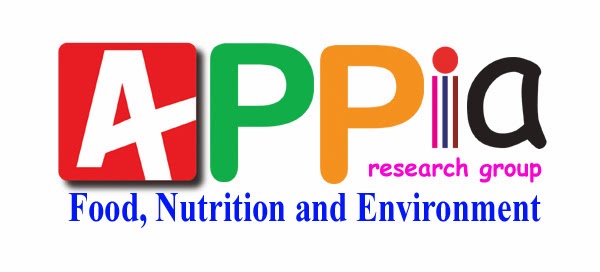Initial Environmental Examination
( IEE ).
|
|
Environmental Impact Assessment (
EIA ).
|
|
Environmental Management plan (
EMP ).
|
|
Effluent Treatment Plant (ETP).
|
|
Waste Management Renewable Energy.
|
|
Climate Change.
|
|
Research Environment Related
Issues.
|
|
Friday, February 28, 2014
Environmental Consultancy
History and Purpose
History
In
2010, APPIA has been started as Sustainable Environmental Management
Consultants for serving the people and society in environment on industrial
pollution control, climate change, aware the people about sustainable
environment and to assist in social problem solving especially for the poor and
vulnerable people.
About APPIA
The APPIA employs 21 people in head office, 6
regional offices and one laboratory across the country. More than half of its
staff is engineers, scientists, and environmental protection specialists; other
groups include legal, public affairs, financial, and computer specialists.
Monday, February 17, 2014
Chemistry Jokes
1. রাসায়নিক Love Story :
Na : তুমি কি আমার ইলেকট্রন গ্রহন করবে ?
Cl : কি ? (লজ্জায় লাল)
আমাকে ভেবে দেখতে হবে, একটু সময় দাও ।
২ দিন পর ,
Na : তুমি সেদিন Ca এর সাথে পার্কে কেন গিয়ে ছিলে ?
Cl : আরে না, Ca তো আমার বান্ধবী CO3 এর বয়ফ্রেন্ড । আমার বান্ধবীর রাগ ভাঙ্গাতে আমরা দুজন গিয়েছিলাম । ওকে নাকি H হুমকি দিয়েছিল ।
কিছুদিন পর
Na : তুমি কি আমার ইলেকট্রন গ্রহন করবে ?
Cl : কি ? (লজ্জায় লাল)
আমাকে ভেবে দেখতে হবে, একটু সময় দাও ।
২ দিন পর ,
Na : তুমি সেদিন Ca এর সাথে পার্কে কেন গিয়ে ছিলে ?
Cl : আরে না, Ca তো আমার বান্ধবী CO3 এর বয়ফ্রেন্ড । আমার বান্ধবীর রাগ ভাঙ্গাতে আমরা দুজন গিয়েছিলাম । ওকে নাকি H হুমকি দিয়েছিল ।
কিছুদিন পর
Equipments Sales & Services
- Water Test Kit (Hardness, pH, Iron, Magnesium)
- Textile equipments
- Circular Knitting Machine (Singapore)
- Semi Jacquard Flat knitting Machine (Taiwan)
- High Tech Circulat Kinitting Machine (Italy)
- High Temperature Fabric Dyeing Machine (Taiwan)
- Color Kitchen For Rotary & Flat Bed Printing (Thailand)
Sunday, February 16, 2014
Volume formulas
1 litre = (10 cm)3 = 1000 cubic centimetres =
0.001 cubic metres,
1 cubic metre = 1000 litres.
Small amounts of liquid are often
measured in millilitres, where
1 millilitre = 0.001 litres = 1 cubic centimetre.
Monday, February 10, 2014
Sunday, February 9, 2014
Odor Removal Control
Ozone Generator
can help reducing odours in different kind of situations. It oxidizes
and breaks down molecules that carry the odour in the first place, thus
eradicating it.
Saturday, February 8, 2014
Hyper Text Markup Language 1
HTML কোন প্রোগ্রামিং ল্যাঙ্গুয়েজ নয়, একে Hyper Text Mark Up Language
বলা হয়। Mark Up Language এক সেট Mark Up ট্যাগের সমন্বয়ে গঠিত হয়। একটা
ওয়েব পেজের বিভিন্ন অংশ ব্রাউজারের মাধ্যমে কিভাবে প্রদর্শিত হবে, তা
HTML এ Mark Up ট্যাগ সমূহ ব্যবহার করে প্রকাশ করা হয় ।
Monday, February 3, 2014
Industrial Waste.
- Waste wood
- Waste thermoplastics; but not including thermoplastic medical waste
- Waste paper
- Waste steel (including stainless steel)
What Are the Benefits of Wastewater Treatment?
1. saving of extra water,
2.recycling of water,
3.ground water,surface water source is safe from pollution due to treatment of waste water.
4.treated water is used for vegetation.
5.cost of transportation of polluted water is saved.
6.Air pollution is limited to treatment plant.
Characteristics of wastewaters
Municipal wastewater is mainly comprised of water (99.9%) together
with relatively small concentrations of suspended and dissolved organic
and inorganic solids. Among the organic substances present in sewage are
carbohydrates, lignin, fats, soaps, synthetic detergents, proteins and
their decomposition products, as well as various natural and synthetic
organic chemicals from the process industries. Table 1 shows the levels
of the major constituents of strong, medium and weak domestic
wastewaters. In arid and semi-arid countries, water use is often fairly
low and sewage tends to be very strong, where water consumption is 90 l/d per person.
Classification of ETP
1 High-grade treatment
 1.1 Chemical
1.1 Chemical
 1.2 Biological
1.2 Biological
 1.3 Chemical-biological
1.3 Chemical-biological
 2 Mechanical treatment
2 Mechanical treatment
 3 Other treatment
3 Other treatment
 4 Direct discharges
4 Direct discharges
Wastewater Treatment
Introduction
Wastewater treatment refers to the process of removing pollutants from water previously employed for industrial, agricultural, or municipal uses. The techniques used to remove the pollutants present in wastewater can be broken into biological, chemical, physical and energetic. These different techniques are applied through the many stages of wastewater treatment.
Subscribe to:
Posts (Atom)


